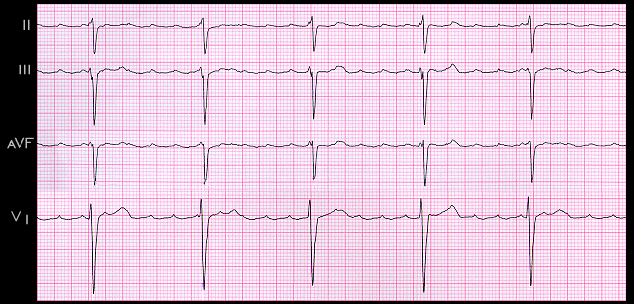
In contrast, examine this ECG. It is from an 85 year old male who was receiving digoxin. It also shows atrial flutter with a flutter rate of approximately 225 and a regular ventricular rate of 45 but, unlike the example shown on the previous page, there is no consistent relationship between the flutter waves, (best seen in lead V1) and the QRS complexes. This suggests that there is high grade, or complete, AV block in which none of the atrial impulses conduct to the ventricles, and that an AV nodal escape rhythm is responsible for the regular narrow QRS complexes. The flutter rate of 225 is a bit slower than usual. This may occur in elderly individuals and in patients receiving antiarrhythmic drugs.
